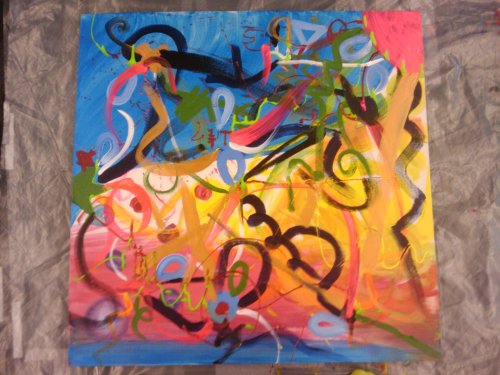 “Mental freedom for all.” I like it. It’s our new Shared Vision. It’s only a small adjustment from our old “Enable Mental Freedom,” but it has a powerful effect on me, kind of like a slow rumbling eruption of glitter. Our shiny new Shared Vision gave us just the boost we needed to decide on our Version 2.
“Mental freedom for all.” I like it. It’s our new Shared Vision. It’s only a small adjustment from our old “Enable Mental Freedom,” but it has a powerful effect on me, kind of like a slow rumbling eruption of glitter. Our shiny new Shared Vision gave us just the boost we needed to decide on our Version 2.
It wasn’t easy. We have lots of amazing ideas (or at least I think they’re amazing; Paul Graham might disagree) — something like twenty-odd full projects we could try — and we need just one. So, we decided to use the Passionometer Protocol:
Passionometer:
- Decide how to represent degrees of passion. (We used sticky tabs of five different colors, cool to hot.)
- Write down all the ideas.
- Each person expresses his/her own degree of passion for each idea. (I stuck one tab next to each idea of a color to indicate how passionate I was about it, and Charlie did the same, so at the end there were two tabs next to each idea. It was quite pretty when we were done.)
- Tally the total amount of passion for each idea. The idea with the highest cumulative team passion wins.
There were two ideas that stuck out, and one of them clearly fit our new Shared Vision: an On-line Team Canvas.
In McCarthy Bootcamps, it’s not uncommon to do team painting. Team painting is a team bonding experience that gets creative juices flowing:
- Premise 1: Each person is unique and sees the painting from a unique perspective.
- Premise 2: The more perspectives that are completely engaged, the better.
- Conclusion: Each person should add exactly what he/she thinks the team painting needs, including painting through or over other people’s work.
Team paintings seem to always come out awesome. I don’t know why, but they do. (See the team painting from my Bootcamp at the top of this post. Eleven people worked on it.) So far as I’m concerned, they’re the epitome of collaborative creative expression. Charlie and I have actually started applying the concept of team painting to a lot of things we do collaboratively, and it always provides us with superior results.
Wouldn’t it be awesome if there were an on-line collaborative painting app specifically designed for team painting? Sure, there are other collaborative drawing apps out there, but we want to try our hands at making one that’s truly amazing. Who knows? Maybe we’ll make something that would be worthy of a McCarthy Bootcamp.
Creative freedom for all. Yes.
– Kia
